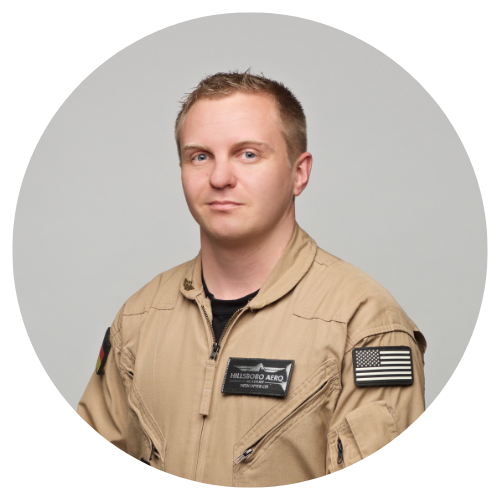Welcome to Lift-Off, our latest newsletter packed with insights on helicopter pilot training and building a career in aviation
In the aviation industry in the US it is common to start your career as a flight instructor. Today we want to explain, why this is a great first job in the cockpit.
USA vs Europe
As previously mentioned, building flight experience is crucial for a pilot’s career. This can be quite challenging in Europe, as there are very few entry-level jobs available. In the U.S., however, it is common to find a job as a flight instructor immediately after completing your training, allowing you to quickly gain a significant amount of flight experience.
Job opportunities in the US
In recent years, over 95% of our graduates from Europe have worked as flight instructors after completing their training. We hire about 30% of our graduates ourselves, and the rest find jobs at other flight schools. Networking and your reputation with other graduates play a big role in this. I also always recommend that after completing the training, you shouldn’t only send online applications for advertised positions, but also visit schools proactively—ideally with your application in hand and ready for an interview with the chief pilot!
CFI as the first job
We often hear the argument that a newly trained pilot cannot be a good flight instructor. This mainly comes from pilots and people in Europe who don’t know or understand the system. My experience at our school and other flight schools shows that the American system works very well. It’s not like a new flight instructor is teaching complex maneuvers or working independently from day one. Our new instructors receive regular, structured training and are supported in their development by experienced instructors. Only after gaining a certain amount of experience are instructors allowed to teach things like off-airport landings and autorotations.
It’s also clear that pilots who have just spent 18 months practicing emergency procedures and maneuvers during their training can fly these much more efficiently and professionally than a commercial pilot. As a professional pilot, you usually practice emergency procedures or are tested on them 1-2 times a year, which amounts to about 2-4 autorotations. In contrast, a flight student in commercial and instructor training typically performs over 200 autorotations.
Great first job
The profession of a flight instructor may not be a long-term career goal for most, but it’s a great way to start your career! You improve your own skills and knowledge far beyond the level of a student pilot while quickly accumulating many flight hours, which allows you to move on to the next step in your career path.
We also have some students who work as flight instructors for their entire CPT and OPT period, gaining additional qualifications such as Stage-Check Instructor, Senior Instructor, CFI Instructor, Assistant Chief, or even EASA flight instructor. Other instructors, on the other hand, leave the flight school after just 9-12 months to fly helicopter tours.
FAQs
On our website, we’ve created a very comprehensive list of common questions about pilot training. You should definitely take a look at it! http://en.flyhaa.de/faq
Webinars
We regularly host webinars and live events around Europe, where we share a lot of information about the training and the career in the helicopter cockpit. You can watch the recording of our latest webinar here:

